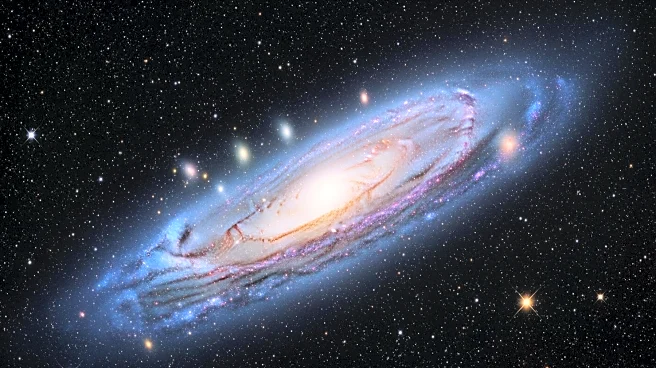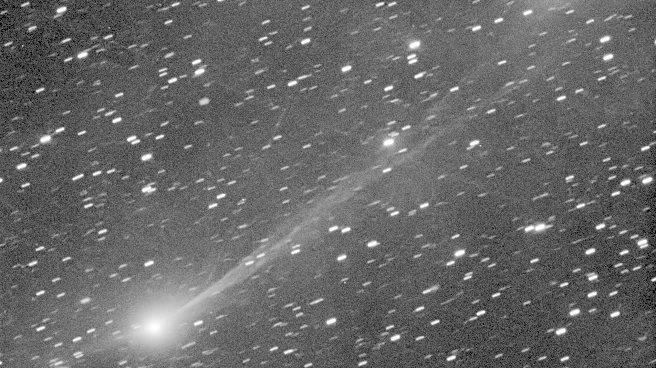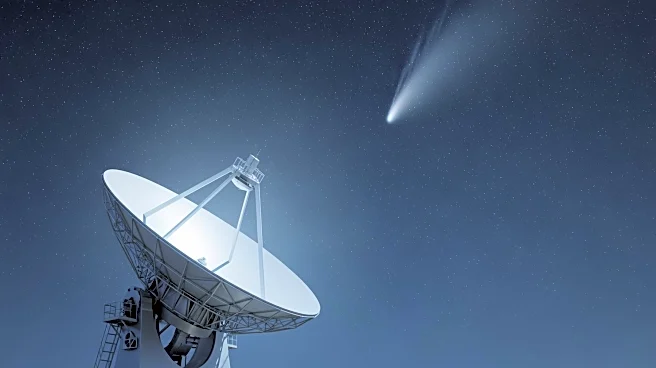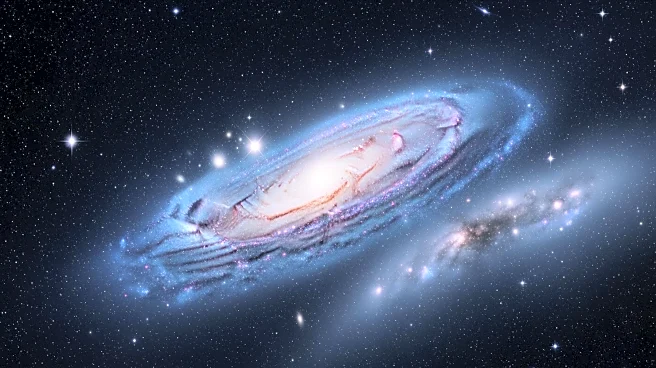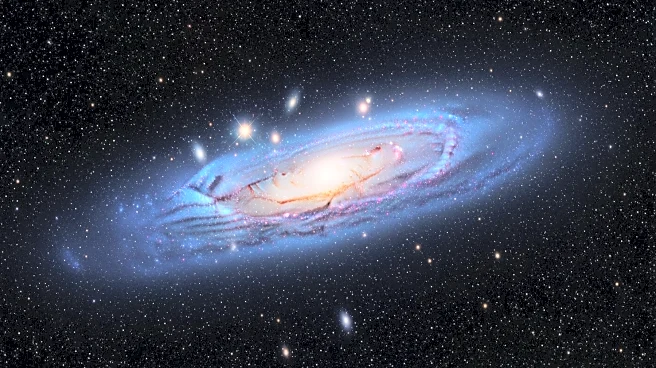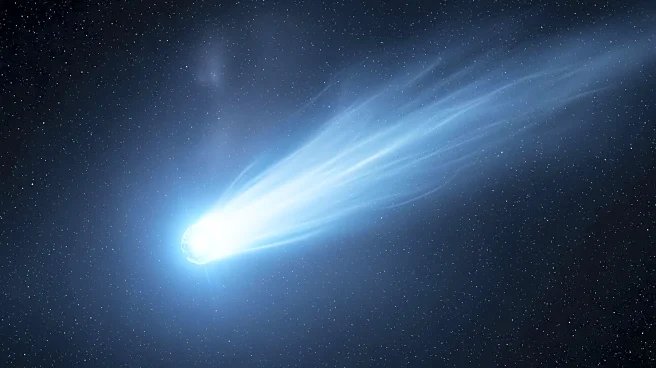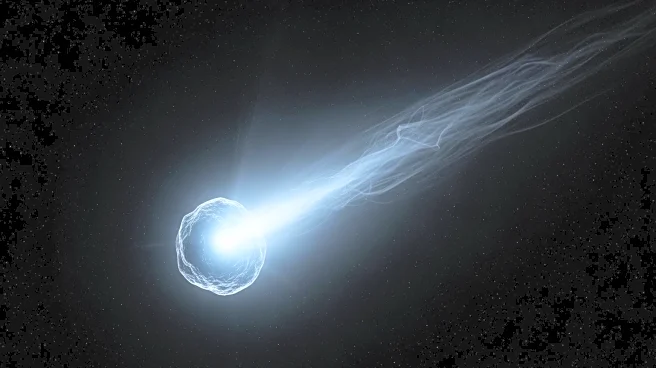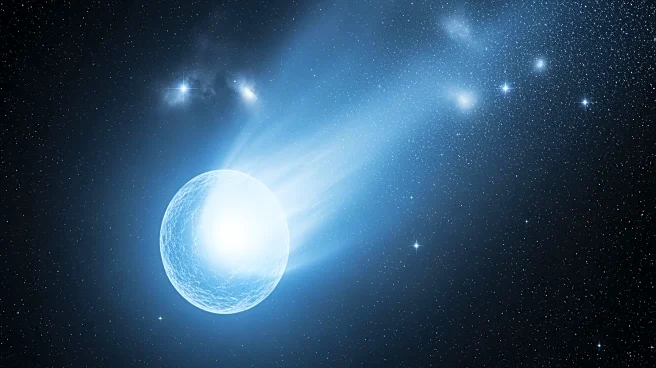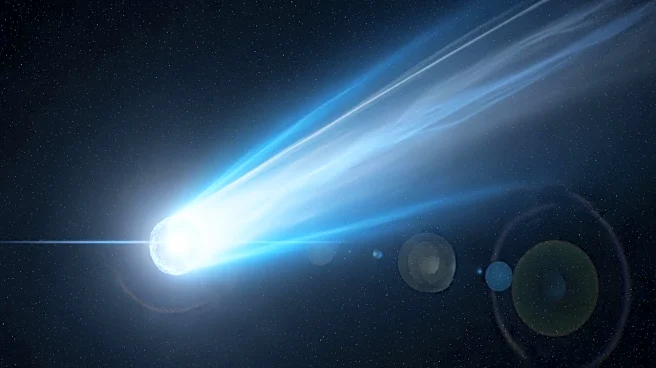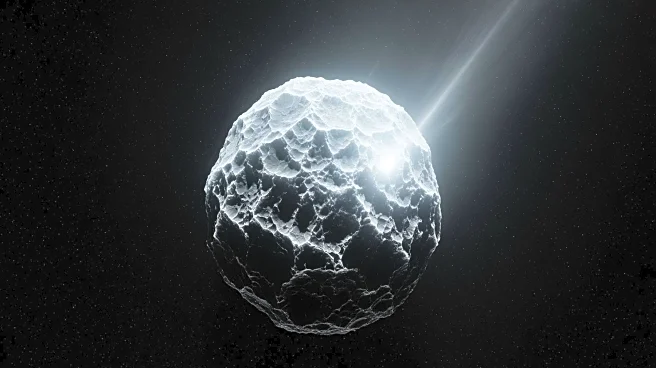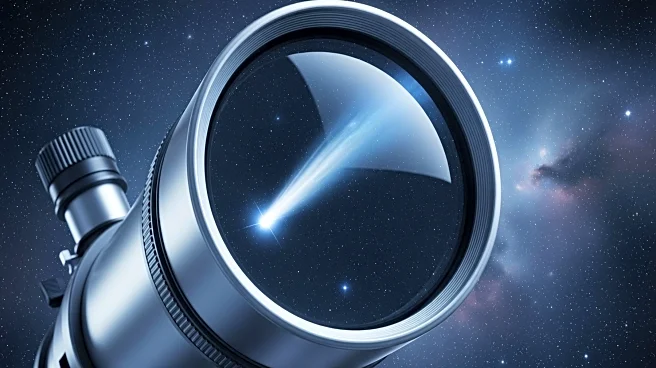What's Happening?
NASA's Hubble Space Telescope has captured an image of the galaxy NGC 2775, located 67 million light-years away in the constellation Cancer. This galaxy presents a puzzling appearance, with features that make it difficult to categorize. NGC 2775 has a smooth,
featureless center resembling an elliptical galaxy, yet it also possesses a dusty ring with patchy star clusters akin to a spiral galaxy. Some astronomers classify it as a flocculent spiral galaxy due to its feathery ring of stars and dust, while others consider it a lenticular galaxy, which shares characteristics with both spiral and elliptical galaxies. The galaxy's unusual structure may be the result of past mergers with other galaxies, as suggested by a tail of hydrogen gas extending around it.
Why It's Important?
The study of galaxies like NGC 2775 is vital for understanding the formation and evolution of galaxies in the universe. By analyzing such unique structures, astronomers can gain insights into the processes that lead to the development of different galaxy types. This knowledge contributes to the broader field of astrophysics and helps refine models of cosmic evolution. The findings from Hubble's observations can also inform future research and missions aimed at exploring the universe's mysteries. Additionally, these discoveries enhance public interest in space exploration and the scientific endeavors of agencies like NASA.
